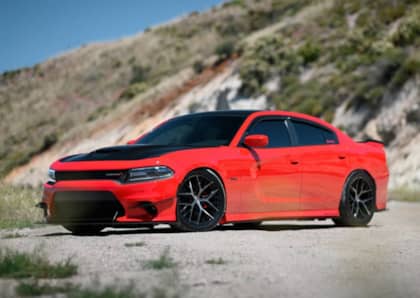The 426 Hemi V8 Was Mopar's Big Block Muscle Car Legend
The 426 Hemi is perhaps the most legendary motor of the muscle car era, an engineering triumph that has transcended its Mopar roots to earn the respect of Blue Oval and Bowtie fans alike. This big block V8 set the standard not just on the street, where it was a rare but overwhelming competitor, but also the race track, where it dominated a number of different series throughout the 1960s and early 1970s.

How did the 426 cubic inch V8 come to acquire the hemi hardware that set it apart from the competition? Unsurprisingly, its roots ran deep in motorsport, where a number of rule changes combined with Chrysler's existing engine program to birth one of the great beasts of high performance history.
Big Big Block
Dodge and Plymouth had enjoyed substantial success with the RB-series of big block V8 engines in the early half of the 1960s. The 'Raised Block' motors had stepped in to replace the original early Hemi motors from the decade before after Chrysler decided that they wanted a cheaper and lighter option that wasn't as complex as the Hemi from a manufacturing standpoint.

The ultimate evolution of the RB was the 'Max Wedge' motor, with a 413 cubic inch edition serving as a 420 horsepower drag special that was also capable of delivering 500 lb-ft of torque. Extremely successful in NHRA, it caused Chrysler's Detroit rivals to kick-start their own engine programs, leading to an arms race that Mopar had no intention of losing.

The first step was punching out the Max Wedge to 426 cubic inches, a development made possible by an FIA rule change in 1963 that pushed upper limit on engine size to 7.0L. Not content with the 425 ponies put out by that motor (which also sported a high compression, aggressive camshaft tune that made it choppy in street driving), Chrysler elected to up the ante by taking a version of its past hemispherical head technology and mating it to the RB block.

The goal was to create a free-breathing, large-displacement V8 that could continue the company's dominance in NHRA and NASCAR competition. There were no shortage of Hemi projects to choose from—each of DeSoto, Dodge, and Chrysler had worked on their own hemispherical engine heads in the previous decade—but the head designs used for the 426 borrowed from Chrysler's early Indy racing program. Evolved from the Firepower Hemi of the 1950s, like its compatriots it used the hemispherical design to introduce spark as close to the center of the combustion chamber as possible and improve on the motor's volumetric efficiency.
Too Much Success
The 1964 season was an over the top success for the 426 Hemi, with cars featuring the engine taking the first four spots at the Daytona 500 (with the win going to Richard Petty). NASCAR, however, took exception to the exotic, competition-only engine and declared that the following year any and all entries had to be homologated for production.

This put Chrysler in a bit of a pickle, as a street Hemi had yet to be developed. Forced to sit out the 1965 season (while continuing its NHRA push), the company set to work on a version of the motor it could stuff into dealerships. Further pressure from changing NHRA classes also played into the decision to move on making the motor available to the general public in street-legal form starting in 1966.

Given its motorsports lineage, Mopar engineers switched the 426 Hemi's focus from endurance (required in a full throttle racing setting) to smoothness (more important in stop and go traffic) and reliability (crucial for keeping customers happy). This meant dropping the compression ratio to a more modest 10.25:1 (from 12.5:1), casting the heads in iron instead of using aluminum (still found on the race edition), and backing off on timing. The modified version of the motor, which also featured a more relaxed camshaft and revised intake and exhaust manifolds, advertised an impressive 425 hp and 490 lb-ft of torque, numbers that may or may not have been fudged to keep insurance companies from having coronaries.
Echoes Through Time
The 426 street Hemi would be available for seven years, finally bowing out in 1972 when EPA pressures and emissions standards sounded a death knell for high-strung big blocks. At roughly the same time, NASCAR changed its rule book in a bid to curb the Hemi's winning streak, keeping the motorsports version out of the nation's premier racing series as well. It stayed alive in NHRA, where it birthed a generation of advanced hemi-headed engines that are still in use across all major classes.

The engine was never a huge seller on either side of the parts counter, with racing teams and civilian customers alike put off by the high cost of adding a Hemi to the mix. Just under 11,000 examples made it onto the muscle car scene. Still, that was more than enough to firmly establish the motor as one of the most sought-after, and celebrated, Mopar V8s of all time.











